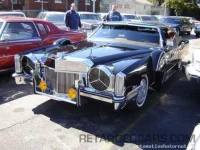Heh, that's my line. In over 10 years on auto forums that's the 1st time anyone has ever said that to me on this subject. I've helped provide the content for lighting FAQs on a forum with almost 350,000 registered members.
Look, since you're new to lighting I'll give a bit more of an explanation. Admittedly in your defense I didn't know the Track version came from the factory with HID optics. However you completely went back on yourself when you mentioned Genesis owners adding HID kids and your wanting to do it to an Elantra. That's 50-state federally illegal. Installing HIDs in headlights that did not come with them from the factory brings them out of compliance with FMVSS No. 108 and 49 U.S.C. § 30122 (since you like looking up laws) states it illegal to bring them out of that compliance. That's why on the box you'll see disclaimers for off-road use only. Halogen optics are not in any way HID compatible. The placements of lights source in the bulb and the way the light is emitted (coil versus arc) are completely different. In the most elementary of examples, when you move a mirror in a telescope things will go out of focus. This is a lesson you learned in 2nd grade. It's the same concept. When you move the light source within the optic assembly the beam no longer focuses properly and you get glare. This is true no matter whether you have reflectors or projectors. The light shifts out of focus and you loose your cleaner cutoff, sending light upwards, and often you will get hot and cold spots (dimmer and bright areas) in the projection itself that would not otherwise be there.
In addition, you mentioned that you "upgraded" you lighting from the factory "low intensity high intensity discharge" (

) headlights. All factory HID setups across the board are 35w 4100-4300k. You bought a 55w "8000k" (no 2 HID kit companies high kelvin bulbs are ever actually the same temperature). Would it surprise you to know that you didn't actually upgrade? Yes, the 55w setup is brighter than the previous 35w kit, but not by much and not on the scale you would think. A 35w 4300k OEM bulb generally has an output of 3,100 lumens. Your garden variety 55w 8000k bulb will measure around 3,500 lumens. By comparison, a 55w 4300k bulb will output ~4,000 and a 35w 8000k roughly 2,600. Past 5000k, bulbs will see a significant drop off in light output. Manufacturers stick with the 4300k range because they actually put out the most usable light. For reference, lumens are a general measure of light, and not an indicator of how well the human eye uses it. Light on the blue end of the color spectrum travels in shorter wavelengths. What this means is that it scatters more readily and disperses (this also means you get less light down range and it means increased glare). This is the basic premises for Rayleigh Scattering, which explains why the sky is blue. Anyways, to display how blue is bad for the human eye, open your favorite photo twice in Photoshop. On one apply a sepia filter, and on the other a cyan filter. Which image has more contrast? That's the same strain on your eyes that your submitting yourself to when driving at night.
Onto foglights. I never mentioned the legality of having them on at night (rather having HIDs in them at all). I said you made your car a mobile road hazard because foglights with HIDs are even worse than halogen low-beams with them. Most people assume that foglights are axillary lighting to help add more light in front of the car. In reality they are only meant to project a few feet out from the immediate vicinity of the car. Their primary purpose is not for forward lighting, it's to light up the lane markers on either side of the car. Foglights also glare by design. This is why you don't even want to run overwattage halogen bulbs, nevermind HIDs. When there is no fog or heavy rain, your fogs are absolutely blinding the cars in front of you because you're not only running high intensity lights, but also from the extra scattering from running blue lights as I explained earlier. And in heavy fog you've actually hurt your own vision for the exact same reasons. Ever driven in fog with your brights on? You can't see anything. Just a wall of white. Combine that with the fact that blue scatters even more in fog and that you're adding more strain on your eyes in the worst possible situation.... Other drivers in your vicinity will also suffer. Hence you've made your fogs useless for their intended purpose.
Anyways, as most people who run these setups and are know-it-alls that seem to think they know what they are doing, I doubt you will read all of this, but I posted this for those who will. I apologize for the fact that I could have organized that better with more paragraphs; now you see why I provided the material for the FAQs instead of writing them.

I challenge you with one of my actual cars. LOL. I have 100w bulbs in my driving lights. I can light up a football field.

I've actually been debating adding 2 Hella 500 foglights inside the grill because we do get fog and have a lot of deer here. Though even I will admit that having so many lights will undoubtedly look ridiculous.












